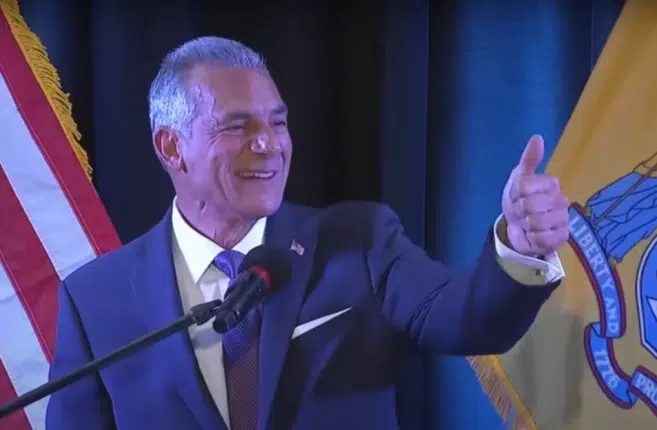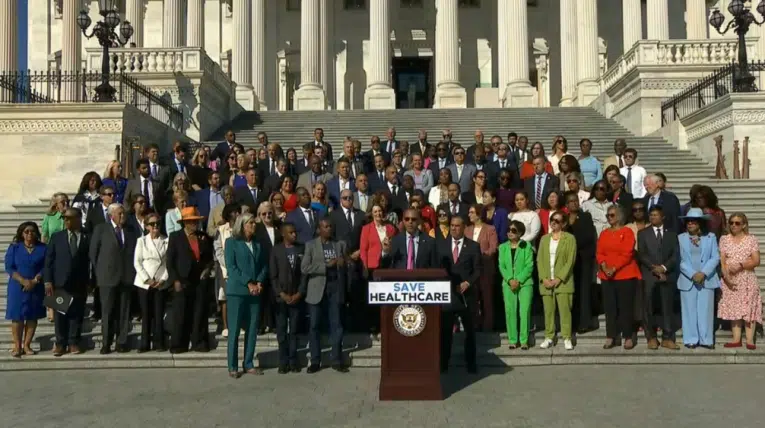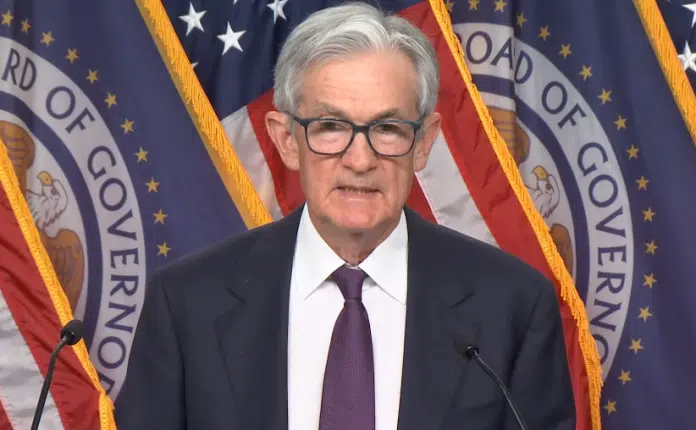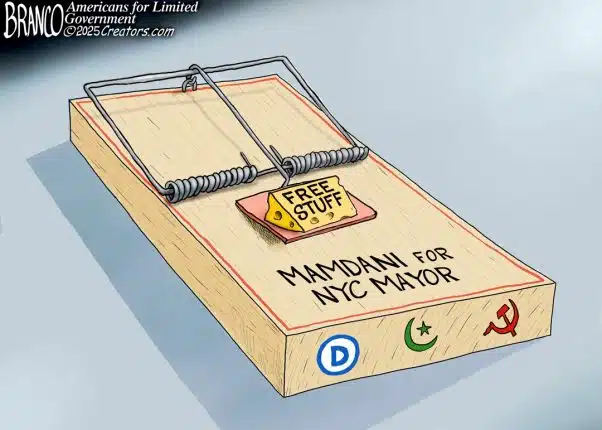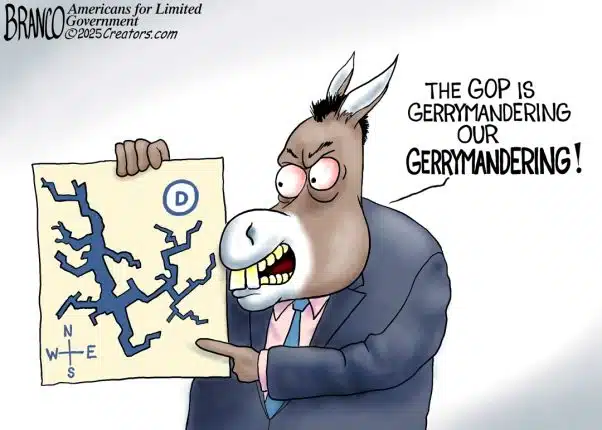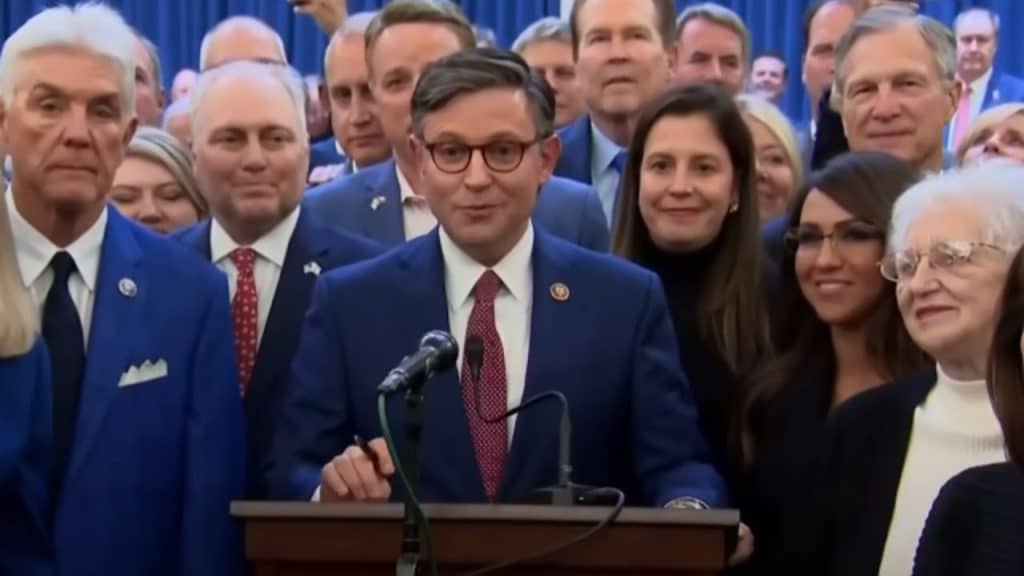
The bad news just keeps rolling in for the Democratic Party. After a Gallup poll from the first half of April showed public trust in Congressional Democrats was at its lowest point in over two decades another hazardous poll found the party’s rating among young voters has nosedived nineteen percentage points since the spring of 2017.
The 50th edition of the Harvard Youth Poll from the Kennedy School Institute of Politics was conducted with 2,096 18-to-29-year-olds and found that ratings for Congressional Democrats have dropped by double digits since President Donald Trump’s first term.
According to the survey, the approval rating for Congressional Democrats among young Americans sits at just 23 percent today, down nineteen percentage points from where it was during the spring of 2017.
While young voters aren’t handing out five-star ratings for Congressional Republicans either, approval for Congressional Republicans has remained stable over the past eight years, even ticking up a percentage point from where it was during President Trump’s first term.
According to the Harvard Youth Poll, 28 percent of young Americans approved of Congressional Republicans in the spring of President Trump’s first term, and that number now sits at 29 percent. Approval for the Congressional Republicans among young people currently sits six points above approval for Democrats, and approval for Democrats has plummeted nineteen points since the spring of 2017.
This is an ominous finding for Democrats, who have banked on the youth vote bolstering their position in recent elections. Democrats are discovering that young Americans are no longer interested in the party’s America-last approach to the border, taxes, and foreign policy.
Young women are the main battalion holding together Democrats’ approval rating according to the Harvard Youth Poll, but despite the party’s best effort to court young women, only 27 percent approve of the party leadership. This is the same exact number as the share of young women who approve of Congressional Republicans. For young men, just 19 percent approve of Congressional Democrats, but 31 percent approve of Congressional Republicans.
Congressional Democrats will have a hard time relying on young minority voters as well, considering just 23 percent of young Hispanics and 40 percent of young Blacks approve of the party. The same share of young Hispanics – 23 percent – approve of Congressional Republicans, while 20 percent of young Blacks approve of Congressional Republicans.
Considering Congressional Democrats have lost nearly twenty percentage points with young Americans in just the past eight years – while approval for Congressional Republicans has remained stable – it is worth looking at factors that could be driving down Democrats’ favorability and credibility in the eyes of young people. On four important metrics, young voters are more aligned with Republican policy priorities than they are with Democrat priorities.
First, young Americans agree with limited government principles on economic growth. Young people say by sixteen pints – 36 percent to 20 percent – that cutting taxes is an effective way to increase economic growth. It is worth noting that a full 42 percent of young people aren’t sure ether way – meaning there is significant room for educating the next generation about the benefits of reducing the burden of taxation on business owners.
Second, young Americans believe – like President Trump and many conservative members of Congress assert – that the southern border is in crisis. Young people also express concerns over the recent wave of immigrants that flooded into the country during the Biden Administration. Young voters say by 20 points – 42 percent to 22 percent – that the U.S. is experiencing an immigration crisis on the southern border. This number includes 26 percent of Democrats, 40 percent of independents and 64 percent of Republicans.
Young people are also not buying the Democratic Party’s talking points that the recent wave of immigration – which has placed burdens on infrastructure, education, and job opportunities for natural born citizens – is benefiting the country. Young people disagree by nine points – 36 percent to 27 percent – that recent immigration into the country has produced more good than harm.
Third, young Americans overwhelmingly agree with Congressional Republicans that the United States spends too much money that could be used to benefit American citizens on foreign aid. In fact, young people say by a whopping 32 points – 40 percent to nine percent – the U.S. spends too much on foreign aid to other nations.
Last, the left’s fixation on race and social justice issues appears to be falling flat with a significant share of young voters. Young Americans say by 26 points – 47 percent to 21 percent – that people today put too much focus on racial issues today. Young Hispanics feel this way particularly – they say 48 percent to 18 percent that society focuses too much on racial identity today.
Another aspect that could be contributing to an erosion of support for Democrats is a general lack of connection and identity among young people which is more pronounced among young Democrats.
When asked about their experience of the covid-19 pandemic – which upturned the lives of all Americans through the draconian stay-at-home and social distancing orders demanded by Democrat leaders – young Democrats report feeling more isolation in the aftermath of the pandemic.
Over a third of young Democrats (35 percent) say they feel isolated in the aftermath of the covid-19 pandemic, compared to 26 percent of Republicans.
Young Democrats also say they have “no sense of belonging” and are “searching for connection” at a higher rate than young Republicans, with 32 percent of young Democrats compared to 22 percent of Republicans saying they have “no sense of belonging” and are “searching for connection”. Young Kamala Harris voters are also ten percentage points more likely to say they have no strong sense of belonging and are searching for connection (29 percent) compared to Trump voters (19 percent).
Unfortunately for Democrats, the party’s larger identity issues – fractured priorities, lack of a set of principles that the average American can embrace, and fixation on fringe social issues – are trickling down to the young people they hoped to recruit.
What is more, on four main modern priorities – lowering taxes, closing the border and ensuring citizens’ first immigration, reducing foreign spending, and removing the cultural fixation on race and social justice issues – young people are more aligned with conservatives.
This does not mean that young people are a slam-dunk for Republicans. Less than a third view the GOP favorably and young people also disagree with Republicans on healthcare and the environment. However, it does indicate that young people are trending toward the right and if Democrats do not begin to prioritize the American people, they will continue losing the youth vote.
As for how this might play out in the 2026 midterm elections, midterm voters tend to skew older, but also more educated. It is possible that young, educated voters who would otherwise have supported Democrats will sit out the election, minimizing Democrat gains. Democrats are already on thin ice with recent generic congressional ballot data showing Congressional Democrats ahead of Republicans by a meager 1.5 percentage points, far below where Democrats were in other elections in which they gained a significant advantage in the midterms.
Manzanita Miller is the senior political analyst at Americans for Limited Government Foundation.


